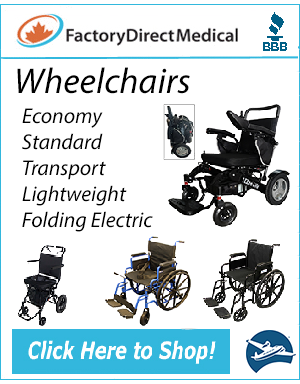
Sunrise Quickie TS Tilting Wheelchair
Manual Tilting Wheelchairs
Adult tilting wheelchairs are not very common out in public because they are large, heavy and rarely provide any independent mobility for users. The type of person these wheelchairs are intended for are difficult to seat comfortably, subject to skin breakdown and pressure sores, are unable to sit upright for extended periods of time or a combination of these items. The tilt mechanism cannot be used by the user themselves but it does allow others to tilt them as required.
I'm a great fan of tilting wheelchairs for anyone who is subject to pressure sores. No other manual wheelchair will allow caregivers to change the weight distribution and pressure points regularly without removing the user from the wheelchair or at least repositioning them.
Tilt wheelchairs are not easy for the user to propel, even if equipped with wheels with hand rims. Self propulsion is not usually an issue as people who are not able to weight shift to prevent pressure sores aren't able to propel a manual wheelchair either.
Another area where tilt wheelchairs excel are for people with kyphotic spines. These people have a curvature of their spine near the top which in effect forces them to always be looking in their own lap. When these people are put in a tilt chair and tilted back a bit their natural head position is upright instead of tilted forward.
Seat Widths and Depths
Seat widths for "adult" versions of tilt wheelchairs will range from about 12" to about 24" depending on the model chosen.
Seat depths for "adult" versions of tilt wheelchairs will range from about 12" to about 22" depending on the model chosen.
Seat Height
Seat heights on a reclining wheelchair range between 12" and 21" depending on the model chosen. The wheel configuration chosen will have an effect on the seat height but there usually some adjustability built into the frame.
Back Height
Where a back height on most conventional wheelchairs will be adjustable within a range of 16" to 20" the back height on a tilt must be higher to support the upper back and head when in a tilted position. The standard back height will be 17" or 24" people requiring this category of wheelchair often require some type of off the shelf or custom back support which will be made and mounted on the wheelchair to provide the back height required.
Frames, Weight & Capacities
Tilt wheelchairs are heavy due to their size and structure and do not as a rule fold like a conventional wheelchair would. The arms can usually be removed and the back folded down once the seating is removed but the base frame itself will not fold.
The weight will be at least 50 lbs. plus any seating accessories and options chosen and can quite easily approach 100 lbs. fully set up.
Tilting wheelchairs have a standard weight capacity of 250 lbs. but most companies offer heavy duty packages which will increase the weight capacity to 350 lbs. or 400 lbs.
Casters, Wheels and Tires
The rear wheels on this category of wheelchair are normally available in a range of 12" to 24" with the larger sizes being most common and have either air filled or solid tires. The larger sizes will have hand rims for self-propulsion but most users of tilt wheelchairs aren't physically able to propel the chairs any distance.
The front casters on tilt wheelchairs are almost always 8" with solid tires but optional casters are are from 4" up to 8".
Axle Plates
Axle plates or some other system of wheel adjustment are standard on most tilt wheelchairs to address stability, center of gravity and seat height.
Brakes
Brakes for some tilt wheelchairs will be similar to the conventional push to lock or pull to lock but usually have brake extensions as the brakes will be mounted fairly low on the frame.
Some tilt wheelchairs waill aslo offer a foot brake which operates the brakes on both sides of the tilting wheelchair at the same time and is for the use of the care giver or attendant.
Armrests
Armrests can be full length or desk length, adjustable height or fixed height but normally will be removable or flip back.
The full length arms are often an aid to people who use the arms for support when transferring while the desk length allow the chair to positioned close to a table without having to remove or flip them out of the way.
Another consideration is the arm height. The standard arms will be 9" or 10" above the seat rails but once a cushion is added the effective height will be 7" to 8" and too short for most people. If the arms are too short the shoulders will slump and the user will slouch making sitting in the chair uncomfortable fairly quickly so manufacturers came up with height adjustable arms which are the best choice for most people who require armrests.
Footrests
Tilting wheelchairs offer the full gamut of footrest options available on any other category of wheelchair. Elevating legrests are aviailable as well as 60°, 70°, 80° and 90° footrests with standard footplates or angle adjustable footplates.
Pros
- Excellent pressure reduction
- Very good for positioning
- Reduce need for restraints & supports
- Very comfortable
Cons
- Expensive ($2,500.00 - $5,500.00)
- Heavy
- Non-folding
- Difficult for users to propel



 Online Vendors
Online Vendors  US Online Vendors
US Online Vendors 

